

First Visit to a Djerbian Jewish Home—Lasting Impressions
By Safouane Tlili | Senior Technician for Carthagina and ASOR Implementing Partner
As a local historian, I found traces of Jewish heritage in buildings, and their fingerprints still mark many old neighborhoods and even a few mosques—some of which I have personally examined and documented (Documenting Pluralistic Cultural Heritage in Djerba, Tunisia). Jewish artisans were well-known for their skill in blacksmithing and repairing plows, in tin smithing, in carpentry, in tanning, in the animal trade, and so on.
But my view changed, or let’s say it expanded, when I had the opportunity to interact directly and personally with some of my Jewish neighbors through the ASOR project on documenting the cultural heritage of ethnic and religious minorities in Tunisia. Over the past year, I delved deeper into knowing the Jews from Djerba with our documentation work. Most significantly, my personal knowledge grew with each café conversation that I had with the two young men, Benyahou Hadad and Golan Wazan. The three of us organized an exhibition of photographs of religious and worship places in Djerba. Each one of us immortalized worship places from our religion from our own point of view. Our shared project culminated with an exhibit where we displayed photos that combined images of Ibadi mosques, Jewish synagogues, and Christian churches.
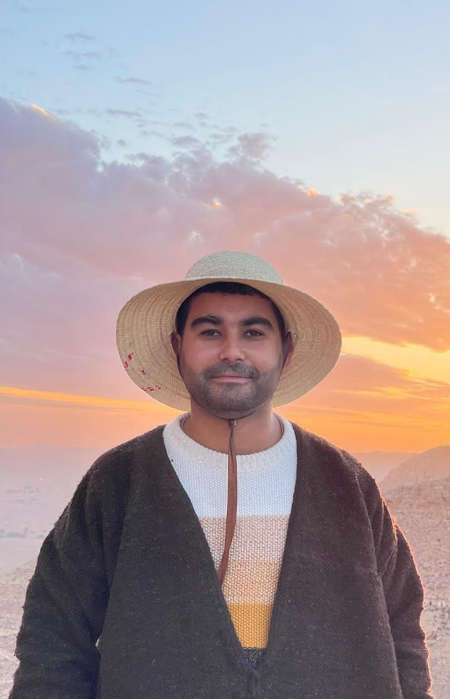
Safouane Tlili
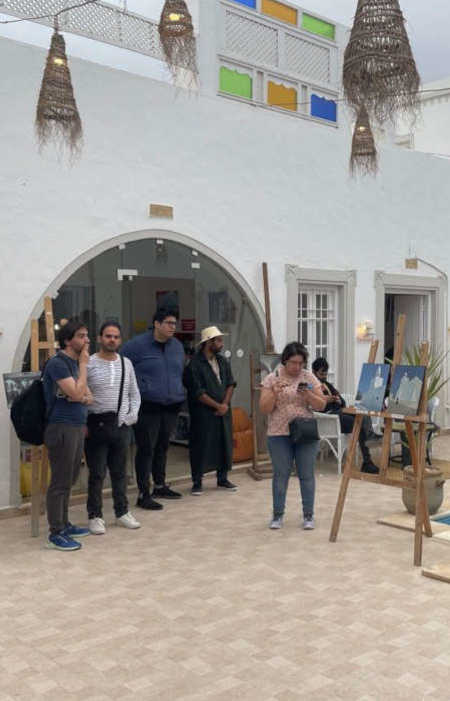
Exhibition of photos of Ibadi and Jewish religious heritage sites
As a native Djerbian, I have known Jewish people my entire life, and I have known of numerous synagogues in our island home. Yet, my interaction with the Jews of the of Djerba has been only minimal through some economic transactions.
I was acquainted with some Jewish neighbors from their well-known shops in Souk Al-Ruba in Houmt Souk, where I went whenever I needed to buy the most beautiful and oldest pieces of Tunisian jewelry. These skilled artisans can create any kind of jewelry that one might ever want. More broadly, I was aware of professions that Jewish people excelled within Tunisia from accounts given by the elders of my community. Historical photographs also provided me with glimpses of Jewish heritage.

Benyahou Hadad, Safouane Tlili, and Golan Wazan
As a local historian, I found traces of Jewish heritage in buildings, and their fingerprints still mark many old neighborhoods and even a few mosques—some of which I have personally examined and documented (Documenting Pluralistic Cultural Heritage in Djerba, Tunisia). Jewish artisans were well-known for their skill in blacksmithing and repairing plows, in tin smithing, in carpentry, in tanning, in the animal trade, and so on.
But my view changed, or let’s say it expanded, when I had the opportunity to interact directly and personally with some of my Jewish neighbors through the ASOR project on documenting the cultural heritage of ethnic and religious minorities in Tunisia. Over the past year, I delved deeper into knowing the Jews from Djerba with our documentation work. Most significantly, my personal knowledge grew with each café conversation that I had with the two young men, Benyahou Hadad and Golan Wazan. The three of us organized an exhibition of photographs of religious and worship places in Djerba. Each one of us immortalized worship places from our religion from our own point of view. Our shared project culminated with an exhibit where we displayed photos that combined images of Ibadi mosques, Jewish synagogues, and Christian churches.
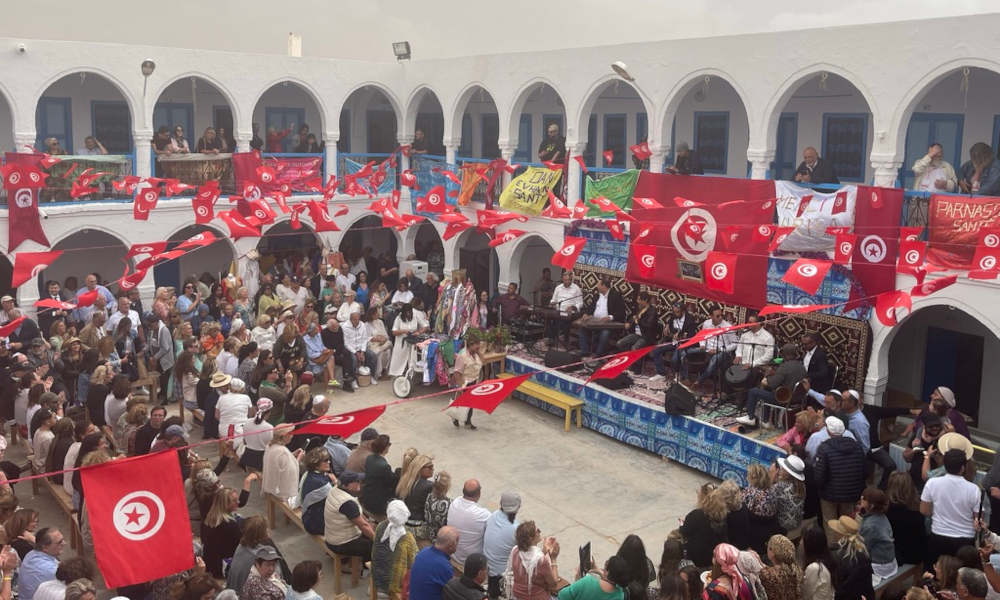
Festival at the Ghriba Synagogue
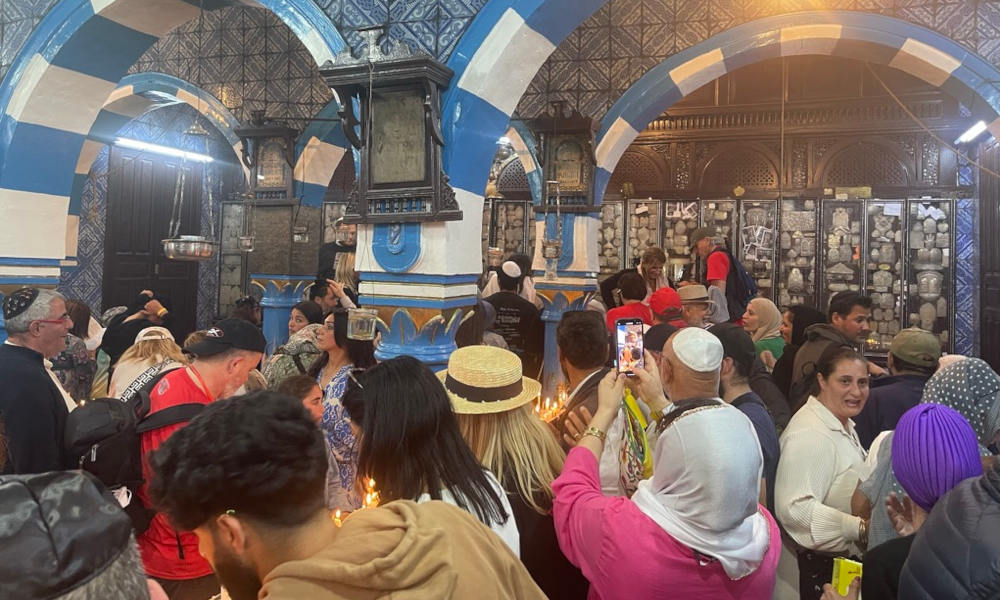
Inside the Ghriba Synagogue during the pilgrimage
Through this project, we did more than document heritage and take photographs. I was constantly asking Benyahou and Golan about their ways of living, eating, clothing, joys, and teachings of their religion. We discussed what is forbidden and what is lawful. We shared what we had in common, and where there are differences between us. With every new meeting, I was gaining information that made me eager to learn more. I think that they did the same.
I know all the regions of the island and have visited and documented every mosque and church on Djerba. Yet, during this period of intense documentation, my knowledge of Jewish worship sites was incomplete. Related, I had never been invited or permitted to take part in the pilgrimage associated with the Lag B’Omer Festival that is held annually at the Ghriba Synagogue. This year, thanks to the ASOR documentation project, I (a native Djerbian) lived the pilgrimage experience for the first time in my life.
In the Ghriba synagogue, I enjoyed an evening participating in the festive atmosphere. There, my ears filled with Tunisian songs and chants. And I enjoyed tasting the most delicious food and sweets. I looked at the happy faces that were beaming and captured their most beautiful pictures with my camera lens. I also had the pleasure of talking with visitors from all over the world. It was an exciting experience, in which I truly touched by the values of richness, diversity, and coexistence that abound on the island of Djerba. Where was all this wealth hidden, and why had I never known of its existence?
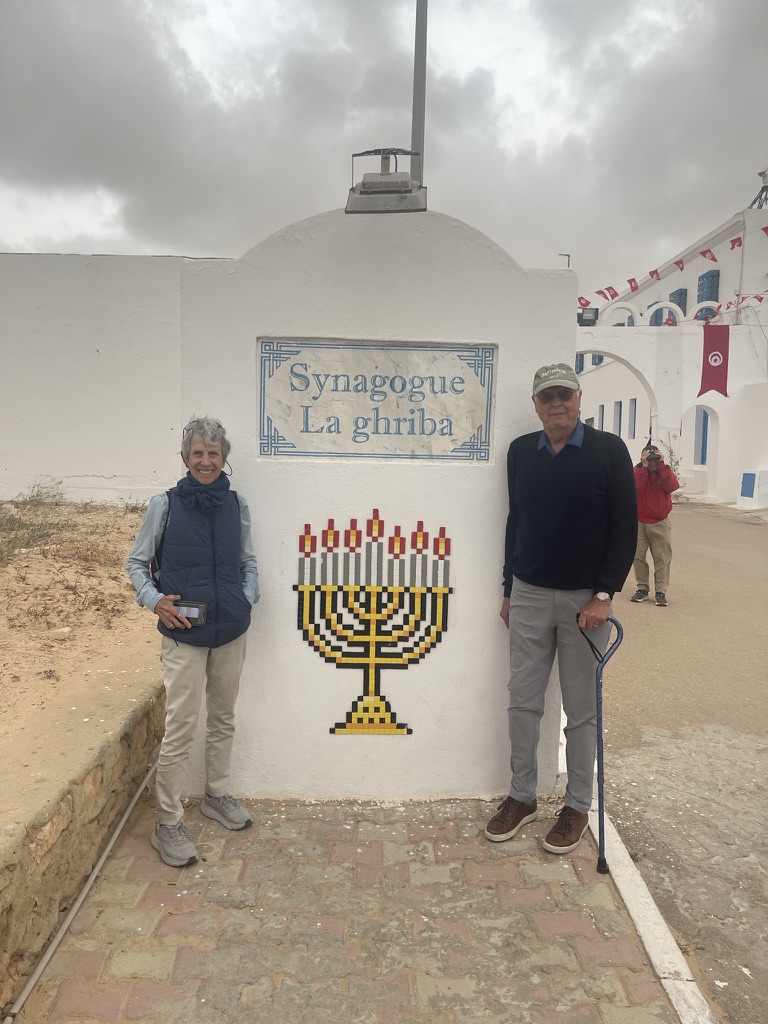
Profs. Carol and Eric Meyers in front of the Ghirba Synagogue
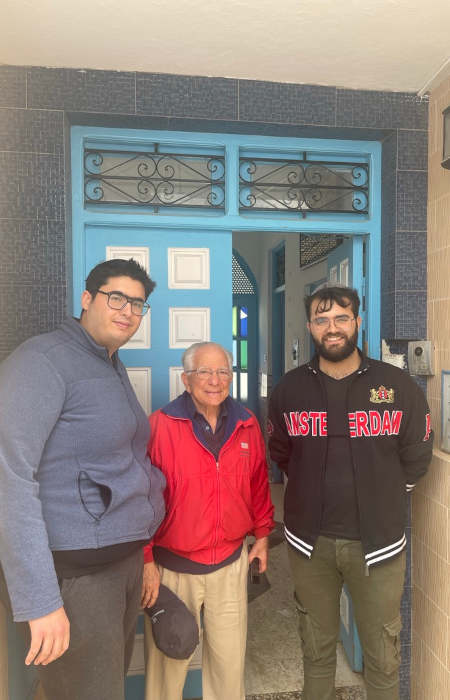
Golan Wazan, Prof. Abraham Sofaer, and Benyahou Hadad
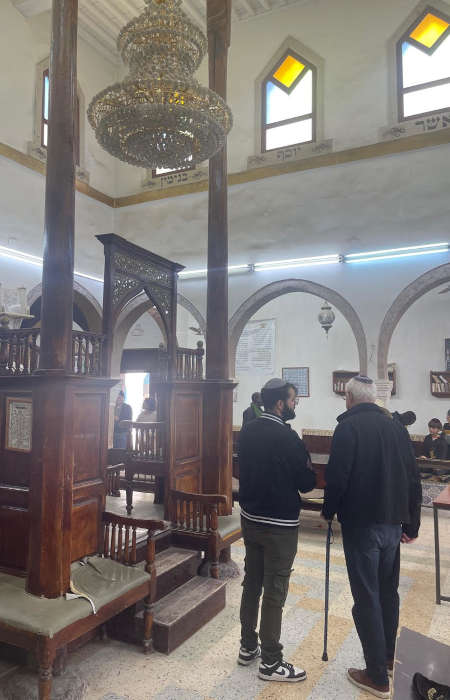
Benyahou Hadad speaking with Prof. Eric Meyers at a synagogue in Houmt Souk, Djerba
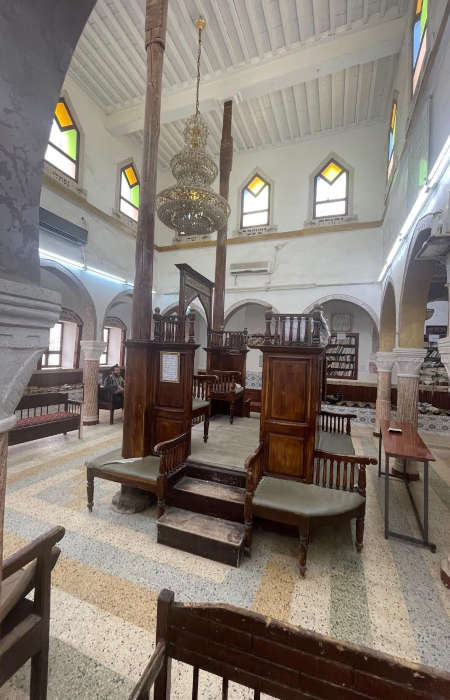
Synagogue in Houmt Souk, Djerba, Tunisia
But the opportunity did not end with the official Ghriba pilgrimage, as the interactions continued the next day. I joined an ASOR delegation from the United States and partners from all over Tunisia, who were able to visit a Jewish family in their home—the first opportunity in my life to do so. This encounter lasted for about two hours in which Jewish men, women, and youth from Djerba spoke with Jews from other parts of the world, with the Amazighs of Djerba and Douiret, with the Ibadis, and with ASOR implementers from the Sahel (Burkina Faso and Niger).
To have minorities talking with each other in the same place seldom happens!! It was an adventure, and an amazing and rich discovery. After the home visit, my Jewish neighbors took us to visit a few synagogues and schools in their neighborhood, where they explained everything to us in full detail and with a sincere and open heart.
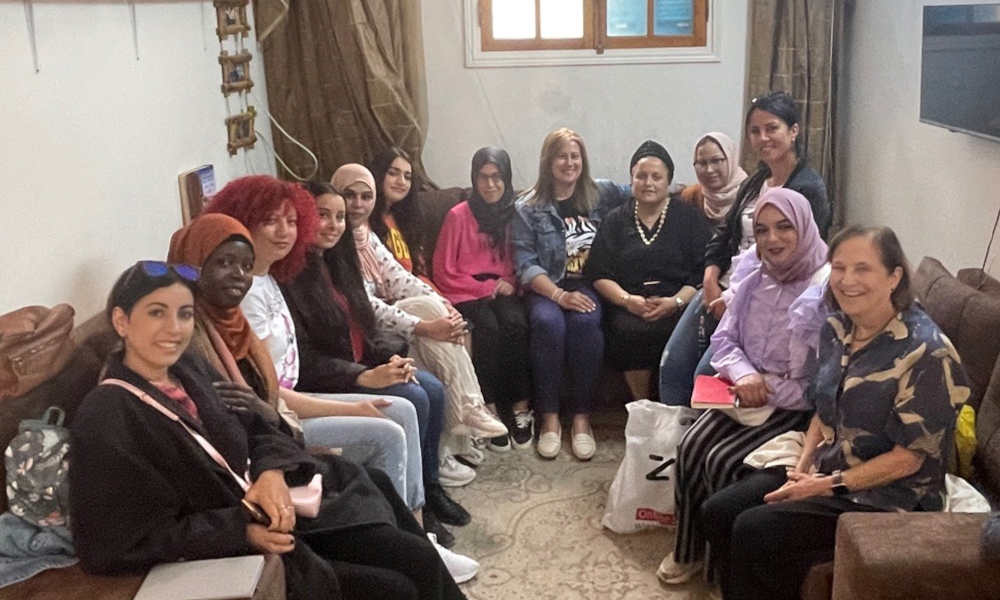
Tunisian women participate in a discussion in Djerban home.
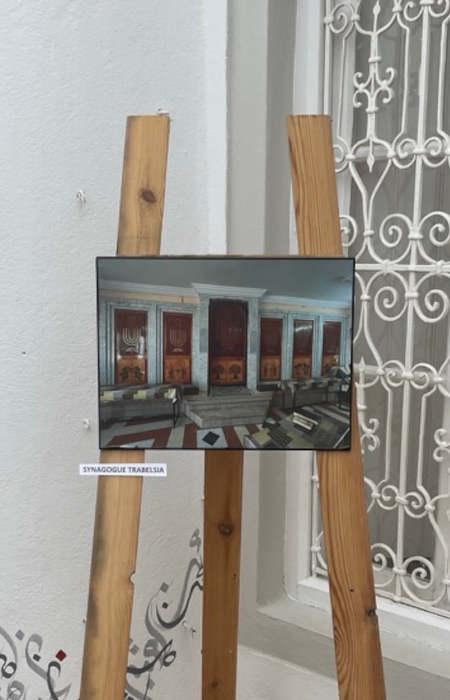
Photograph of Synagogue Trabelsi at exhibition of photos of Ibadi and Jewish religious heritage sites
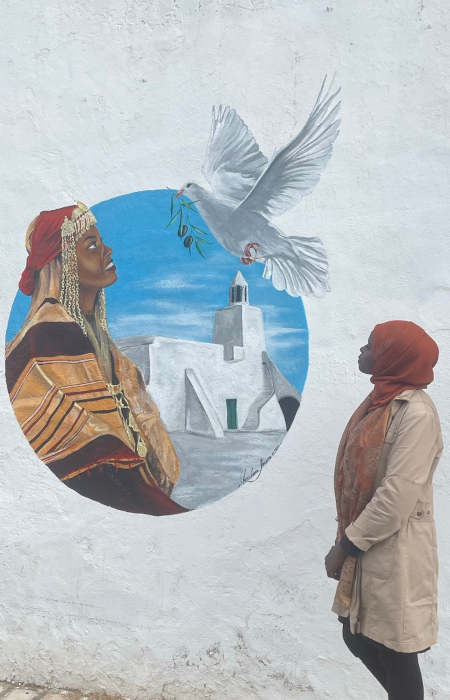
Djerba, the land of peace by Yousra Chouchene (featured in the photo). Ms. Chouchene painted this mural in the hope that it will remind all that Djerba will remain a land of peace, tolerance, love, and giving forever. The mural also was featured on the program cover for the recent workshop on heritage in Tunisia (June 19-20, 2023).
An experience like this is not common, but I sincerely hope that it will happen again because of its importance in spreading noble and humane values, in accepting people from difference backgrounds and experiences, and in coexisting in peace and security.
I hope I will have the chance to host my Jewish neighbors in my home, so I could resume our communication and acquaintance sessions.
